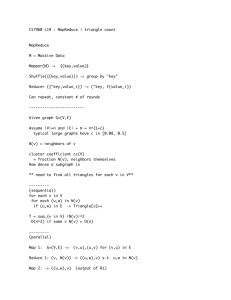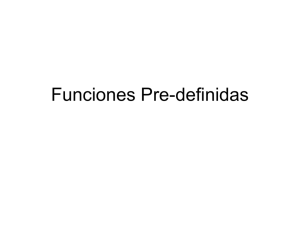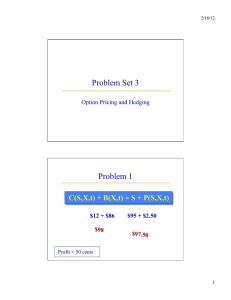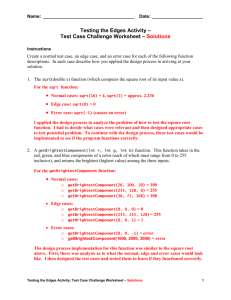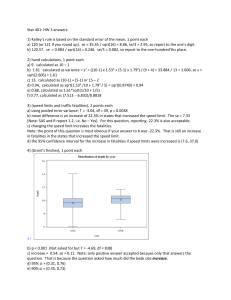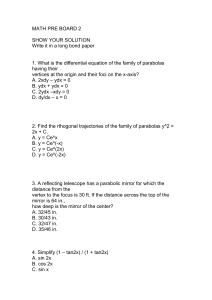MCMD L16 : MapReduce | triangle count MapReduce M = Massive Data
advertisement
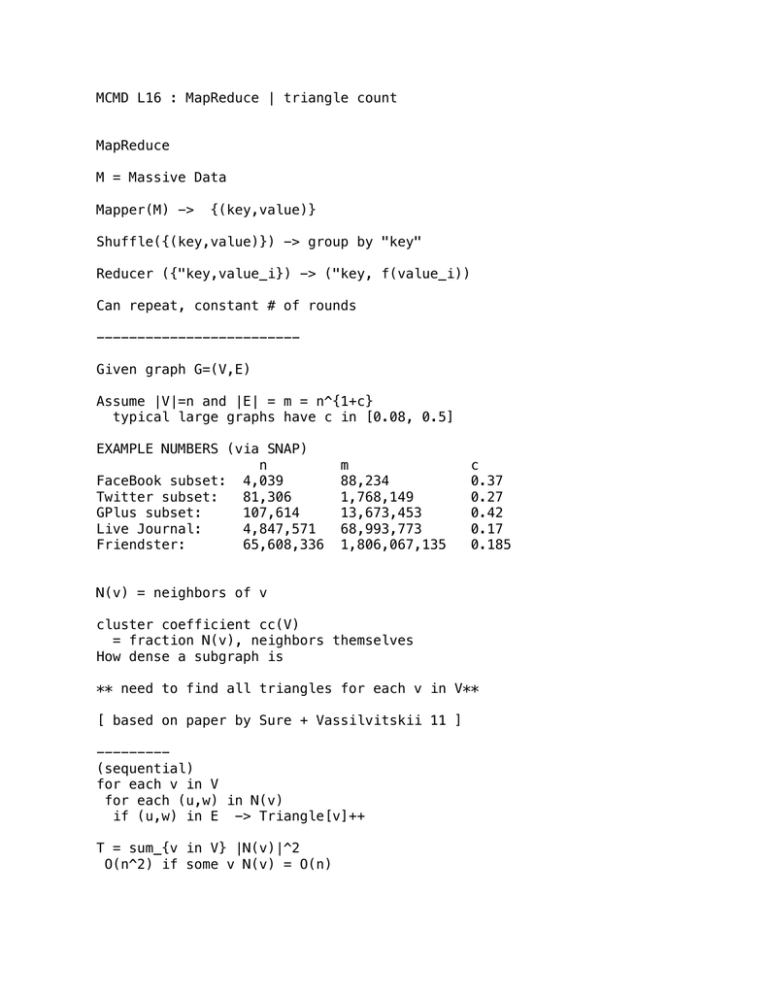
MCMD L16 : MapReduce | triangle count
MapReduce
M = Massive Data
Mapper(M) ->
{(key,value)}
Shuffle({(key,value)}) -> group by "key"
Reducer ({"key,value_i}) -> ("key, f(value_i))
Can repeat, constant # of rounds
------------------------Given graph G=(V,E)
Assume |V|=n and |E| = m = n^{1+c}
typical large graphs have c in [0.08, 0.5]
EXAMPLE NUMBERS (via SNAP)
n
FaceBook subset: 4,039
Twitter subset:
81,306
GPlus subset:
107,614
Live Journal:
4,847,571
Friendster:
65,608,336
m
88,234
1,768,149
13,673,453
68,993,773
1,806,067,135
c
0.37
0.27
0.42
0.17
0.185
N(v) = neighbors of v
cluster coefficient cc(V)
= fraction N(v), neighbors themselves
How dense a subgraph is
** need to find all triangles for each v in V**
[ based on paper by Sure + Vassilvitskii 11 ]
--------(sequential)
for each v in V
for each (u,w) in N(v)
if (u,w) in E -> Triangle[v]++
T = sum_{v in V} |N(v)|^2
O(n^2) if some v N(v) = O(n)
--------(parallel)
Map 1:
G=(V,E) ->
(v,u),(u,v) for (v,u) in E
Reduce 1: (v, N(v)) -> ((u,w),v) s.t. u,w in N(v)
Map 2: -> ((u,w),v)
-> ((u,w),$)
(output of R1)
for (u,w) in E
Reduce 2: ((u,w),{v1,v2,v3,...vt,$?}
iff $, then -> (vi,1/3)
Map 3: identity
Red 3: aggregate
:(
running time still max_{v in V} |N(v)|^2
-------LiveJournal
80% reducers done in 5 min
99% reducers done in 35 min
some 60 minutes
--------------------------Idea 1: count each triangle once, with lowest degree
(sequential)
for each v in V
for each (u,w) in N(v)
if deg(u) > deg(v) && deg(w) > deg(v)
if (u,w) in E -> {Tri[v]++,Tri[u]++,Tri[w]++}
In Reduce 1, add if condition.
In Reduce 2, -> (vi,1)
-> (u,1) , (w,1)
Works better!
Last reducer at around 2 minutes
two types of nodes:
L = {v | N(v) <= sqrt{m} }
H = {v | N(v) > sqrt{m} }
|L| <= n -> produce O(m) pairs
n * sqrt{m} = m -> n < sqrt{m}
n=m^a m = m^a * m^b where a+b<1
b<1/2
n * (sqrt{m})^2 = O(m^{3/2})
work = m^a + m^2b
|H| <= 2sqrt{m} -> produce O(m) pairs
2 sqrt{m} (2 sqrt{m})^2 = O(m^{3/2}) since only pairs with H
if m = O(n^2) (very dense)
n ~ sqrt{m}
-> O(m^{3/2}) work (optimal!)
-----------------Idea 2 : Graph Split
partition V into p equal-size sets {V1,V2,...,Vp}
For triples (Vi,Vj,Vk) -> subgraph G_{ijk} = G[Vi + Vj + Vk]
compute triangles on G_{ijk}
triangles counted {1,p-2, or (p-1 choose 2)~p^2} times
figure out and adjust
subgraph has O(m/p^2) edges in expectation
--> V_{i,j,k} has 3n/p vertices, random edge in set w.p. 9/p^2
work: p^3 * O((m/p^2)^{3/2}) = O(m^{3/2})
total space used: O(pm) expected
p about 20 worked best on LiveJournal graph
